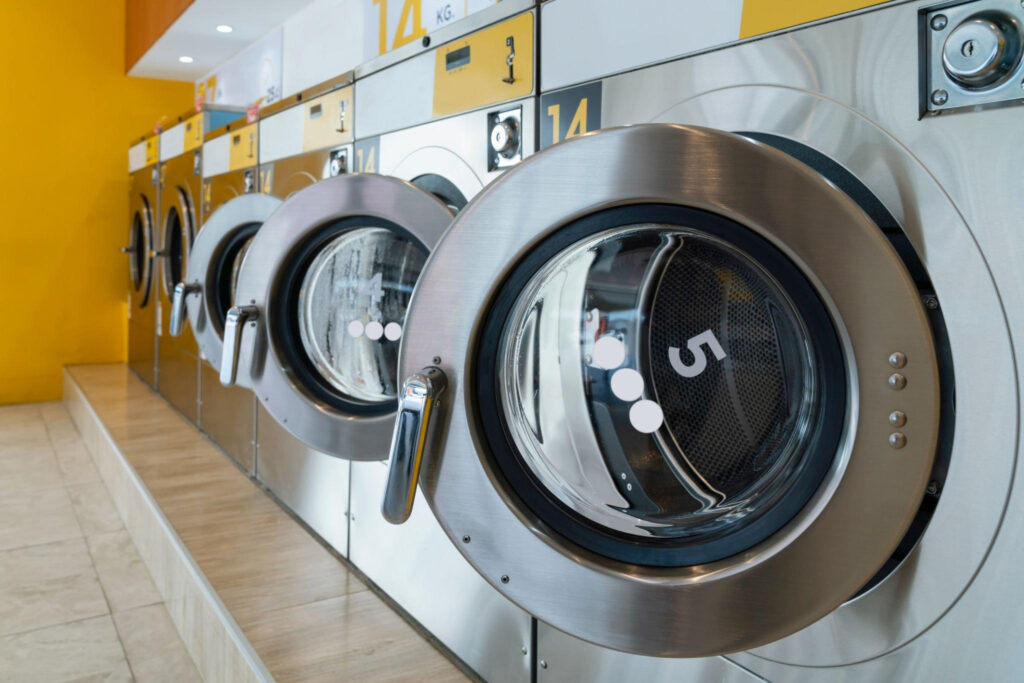The Laundromat business has been a pillar of local communities for decades. It’s more than just washing machines and dryers; it’s a highly profitable industry often resilient to economic downturns. Everyone needs clean clothes, right? What makes this venture alluring are its predictable costs, passive income potential, and relatively simple business operations.
This comprehensive guide is designed to navigate you through the intricate process of buying a laundromat. From assessing your budget to signing the dotted line, we cover everything. Keep reading to uncover actionable steps and insights to make your laundromat investment a seamless and profitable venture.

1. Assess Your Budget
How Much You Can Afford
Budget assessment is paramount. A typical laundromat can cost anywhere from $200,000 to $1 million, depending on location, size, and condition. Create a detailed financial plan that factors all the startup costs, including equipment, lease, renovations, and initial marketing campaigns.

Financing Options
While paying in cash is ideal, many turn to financing options like business loans, investor partnerships, or Small Business Administration (SBA) loans. Investigate interest rates and repayment terms to ensure they align with your projected cash flow.
2. Research the Market

Location Analysis
The real estate mantra “Location, Location, Location” holds water here. High-traffic areas near apartments, college dorms, or busy streets are gold mines. Consider factors like parking space, crime rates, and proximity to competitors.
Customer Demographics
Understanding your target market is essential. Are you catering to college students, busy professionals, or families? This knowledge helps in optimizing your services, pricing, and promotional activities.
3. Choose Between a Startup or an Existing
Pros and Cons of Starting New vs. Buying an Existing Laundromat
Starting New
- Pros: Full control over design, modern equipment, and no legacy issues.
- Cons: High upfront costs, time-consuming, and uncertain ROI.
Buying Existing
- Pros: Established customer base, proven cash flow, and quicker profitability.
- Cons: Potentially outdated equipment, existing business debts, or poor reputation to mend.
4. Prepare a Business Plan

Objectives, Financial Projections, and Marketing Strategy
Map out your business journey. Include objectives like profit margins, expansion plans, and customer retention targets. Financial projections should be realistic, encompassing revenue streams, operating costs, and net profits. Don’t forget a robust marketing strategy to attract and keep customers.
5. Legal Formalities
Licenses and Permits
You’ll need a range of licenses, such as a business license, fire department permit, air and water pollution control permit, and a public health license. The list may vary by location, so consult local and state agencies for exact requirements.

Contracts and Agreements
Before you buy, review all contracts, leases, and supplier agreements. Employ a legal advisor for meticulous contract evaluation, ensuring all obligations are clearly defined and protect your interests.
6. Find and Evaluate Options
Where to Look for Laundromats for Sale
Options abound online business marketplaces, commercial real estate agents, or even direct inquiries to laundromat owners. Networking within industry circles can also unearth some hidden gems.
How to Evaluate a Good Buy
Conduct a thorough due diligence process. Review financial records, assess equipment condition, and consider customer reviews. Use EBITDA (Earnings Before Interest, Taxes, Depreciation, and Amortization) to gauge business health and estimate its true value.
7. Make the Purchase

Negotiating the Deal
You’ve found ‘the one,’ now what? Successful negotiations hinge on balancing assertiveness and compromise. Understand the seller’s motivations and use that leverage for price negotiations or favorable payment terms.
Completing the Sale
Post-negotiation, you’ll enter the final sale process. This involves signing contracts, transferring licenses, and fulfilling any agreed-upon contingencies. Employ a competent business attorney to oversee the documentation and transaction closure.
8. Get Started
Renovations and Upgrades
Some sprucing up is inevitable unless you’ve acquired a pristine, state-of-the-art facility. Update the signage, refurbish the interior, and perhaps invest in energy-efficient machines for long-term savings.
Opening Your Doors
All set? Open the doors and let the laundry commence. Use grand opening promos and social media buzz to attract initial clientele. The initial months will be trial and error; adjust your business plans as you learn the ropes.
Conclusion
We’ve journeyed through the essentials of buying a laundromat: assessing your budget, market research, choosing between startup or existing, preparing a business plan, tackling legal formalities, finding and evaluating options, making the purchase, and finally, opening your doors.
If you’ve reached this far, you’re more prepared than most. The laundromat business offers a promising and stable investment avenue. Take that first step, and may your journey in the laundromat industry be as smooth as your freshly laundered linens.
FAQs How To Buy A Laundromat
How Much Money Can I Make from a Laundromat?
The profitability varies widely depending on multiple factors such as location, size, and how well-managed the facility is. However, a well-run laundromat can generate a net annual income ranging from $30,000 to $1 million.
How Long Will It Take to Break Even?
The break-even point can be anywhere from 6 months to several years. This depends on the initial investment, operating expenses, and your revenue. Buying an existing laundromat with a strong customer base may lead to a quicker break-even point.
Is a Laundromat Business Recession-Proof?
While no business is entirely recession-proof, laundromats tend to be more resilient than other types of businesses. Clean clothes are a basic necessity, and people will need this service regardless of the economic climate.
Should I Buy a Laundromat Franchise?
Franchises offer brand recognition and proven business models but usually come with hefty upfront costs and ongoing royalties. Assess your comfort with these commitments before choosing this route.
Can I Run a Laundromat Passively?
Yes, many owners consider laundromats to be semi-passive investments. However, some level of oversight is necessary for tasks like machine maintenance, customer service, and restocking supplies.
How Do I Price My Services?
Pricing depends on your operational costs, competition, and the perceived value of your services. You may use techniques like bundling services or offering loyalty programs to attract and retain customers.
What Are the Ongoing Costs?
Ongoing expenses include utilities (water and electricity), rent, employee wages, insurance, maintenance, and marketing efforts. Make sure to budget for these in your business plan.
Do I Need Special Licenses or Permits?
The required permits and licenses will vary depending on your jurisdiction. Common requirements include a general business license, fire department permit, and potentially a health department permit.
How Important Is Location?
Location is crucial. It should be easily accessible and preferably in a high-traffic area. Being situated close to apartment complexes, colleges, or busy commercial areas can significantly boost your business.
How Can I Boost Customer Engagement?
Customer engagement can be enhanced by offering a clean and comfortable environment, free Wi-Fi, loyalty programs, and quick service. Also, be sure to manage your online reputation through positive reviews and active social media engagement.
